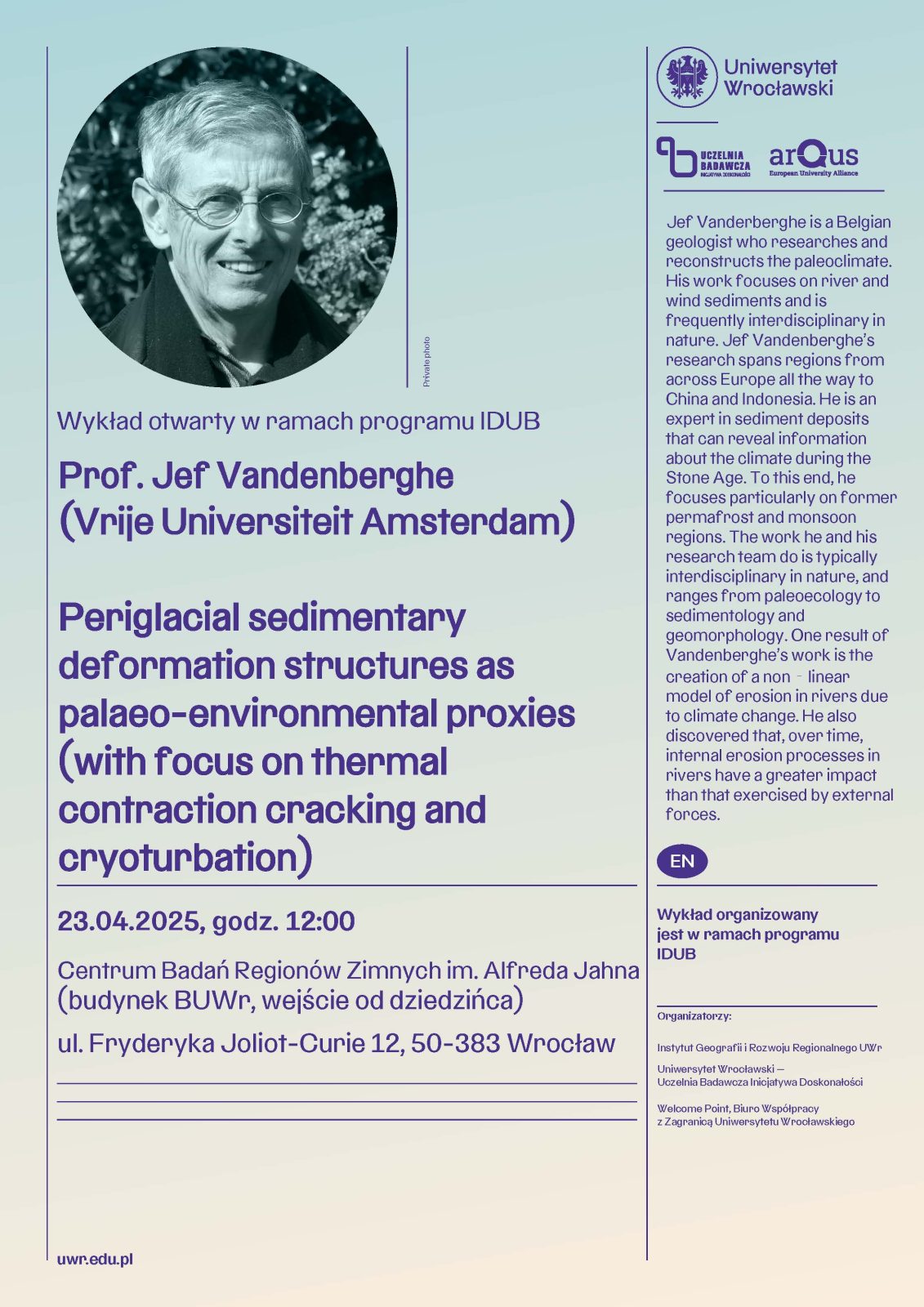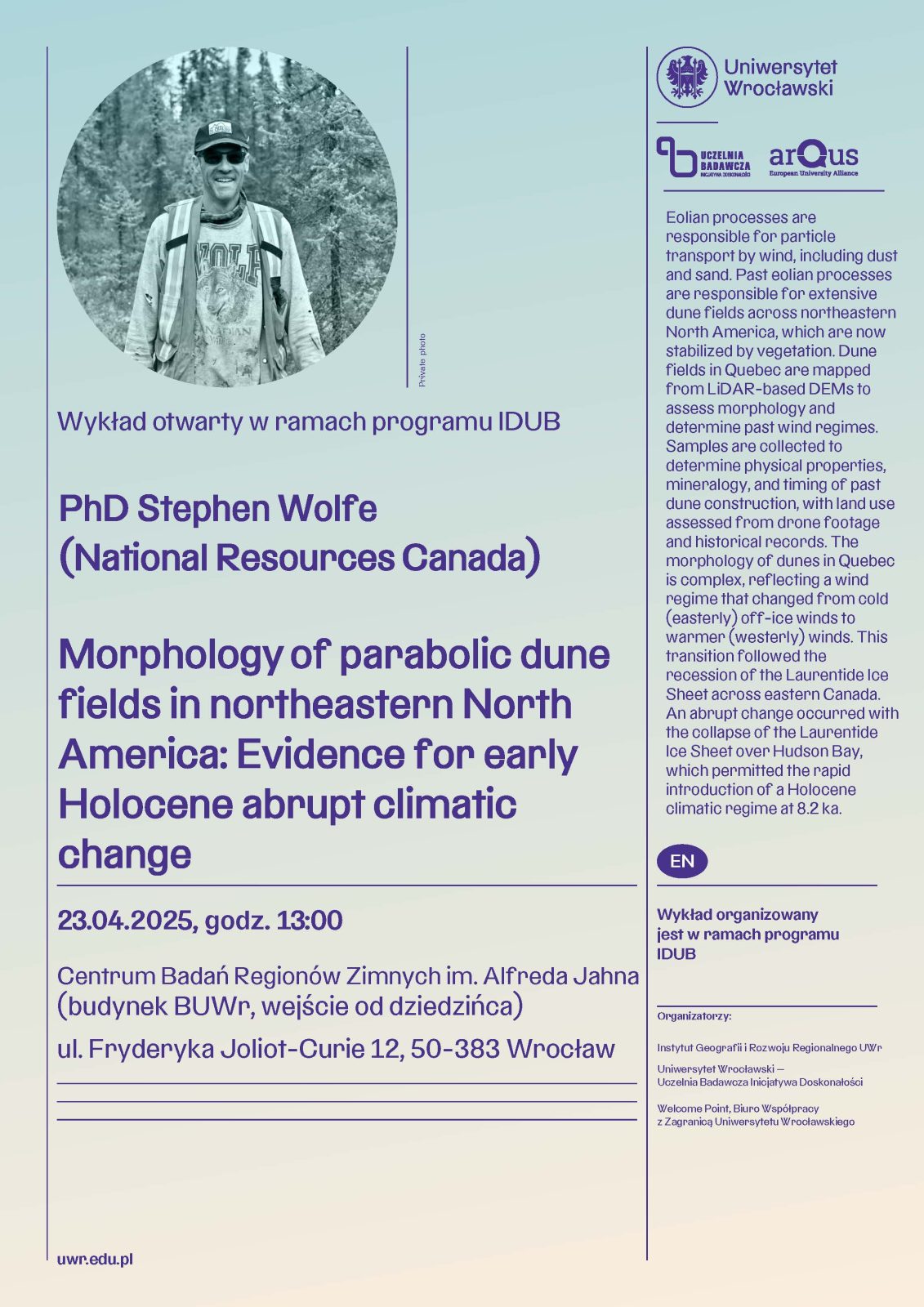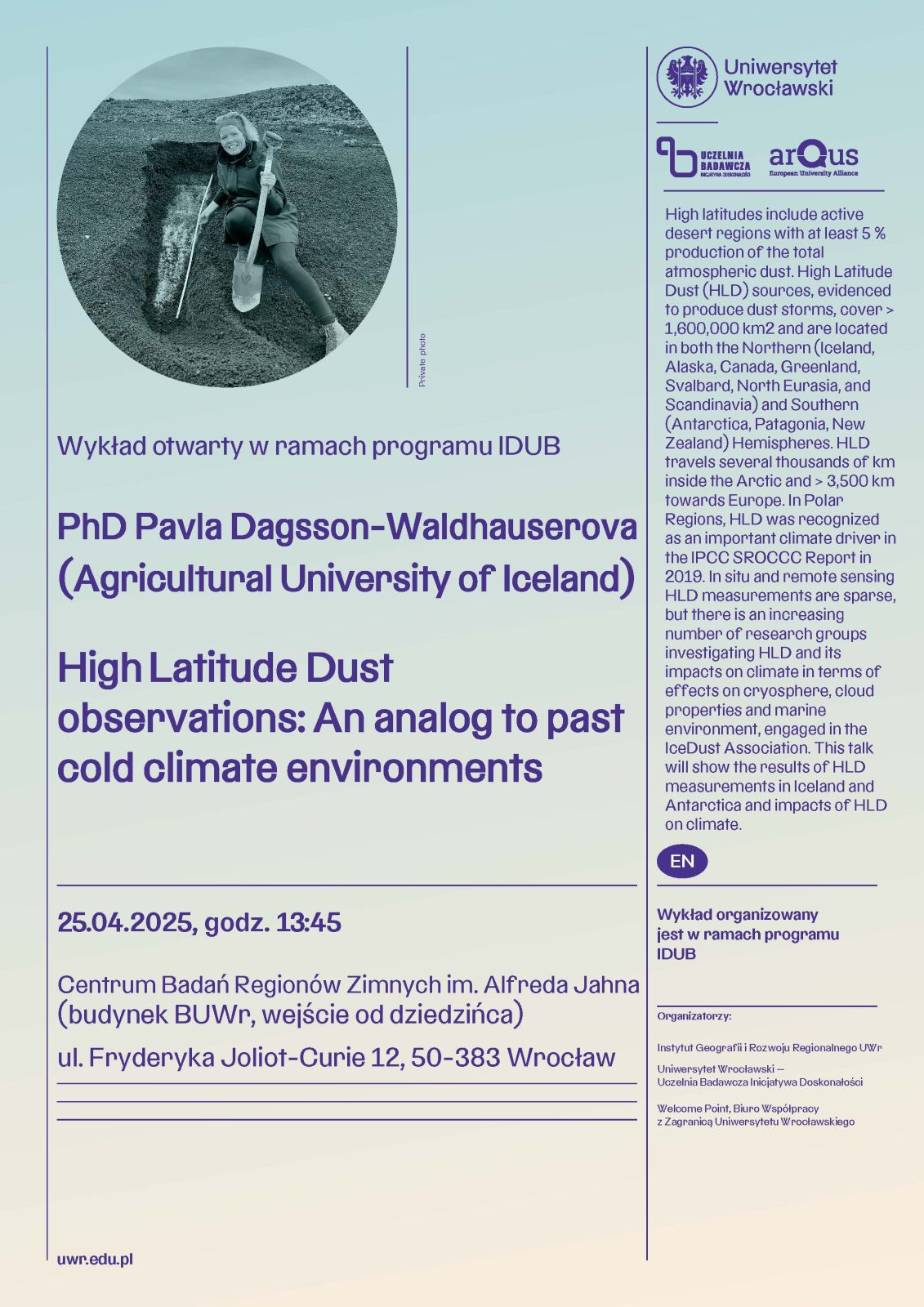
A scientific week at the UWr Institute of Geography and Regional Development
We’re heading into a busy week at the Institute of Geography and Regional Development of the University of Wrocław. As part of the Visiting Professors Programme (IDUB), our university will host distinguished researchers:
- Prof. Jef Vandenberghe (Vrije Universiteit Amsterdam)
- PhD Stephen Wolfe (Natural Resources Canada)
- PhD Pavla Dagsson-Waldhauserová (Agricultural University of Iceland)
Each scheduled event will offer an opportunity to attend an open lecture focused on cold regions – areas that serve as a kind of litmus test for contemporary climate change.
All events will take place at the Alfred Jahn Cold Regions Research Centre, located in the University Library – a unit where, since last year, scientific efforts of Wrocław-based researchers specialising in the Arctic and Antarctic have been concentrated. The lectures are warmly hosted by the visit coordinators: prof. Zdzisław Jary and dr Michał Łopuch.
Below you will find descriptions of all three visits.
On Wednesday, 23 April 2025 at 12:00, Prof. Jef Vandenberghe from Vrije Universiteit Amsterdam will deliver a lecture entitled “Periglacial sedimentary deformation structures as palaeo-environmental proxies (with focus on thermal contraction cracking and cryoturbation)”.
Biographical note
Jef Vanderberghe is a Belgian geologist who researches and reconstructs the paleoclimate. His work focuses on river and wind sediments and is frequently interdisciplinary in nature. Jef Vandenberghe’s research spans regions from across Europe all the way to China and Indonesia. He is an expert in sediment deposits that can reveal information about the climate during the Stone Age. To this end, he focuses particularly on former permafrost and monsoon regions. The work he and his research team do is typically interdisciplinary in nature, and ranges from paleoecology to sedimentology and geomorphology. One result of Vandenberghe’s work is the creation of a non‐linear model of erosion in rivers due to climate change. He also discovered that, over time, internal erosion processes in rivers have a greater impact than that exercised by external forces.
That same day, at 13:00, PhD Stephen Wolfe from Natural Resources Canada will present a lecture entitled “Morphology of parabolic dune fields in northeastern North America: Evidence for early Holocene abrupt climatic change”.
About lecture
Eolian processes are responsible for particle transport by wind, including dust and sand. Past eolian processes are responsible for extensive dune fields across northeastern North America, which are now stabilized by vegetation. Dune fields in Quebec are mapped from LiDAR-based DEMs to assess morphology and determine past wind regimes. Samples are collected to determine physical properties, mineralogy, and timing of past dune construction, with land use assessed from drone footage and historical records. The morphology of dunes in Quebec is complex, reflecting a wind regime that changed from cold (easterly) off-ice winds to warmer (westerly) winds. This transition followed the recession of the Laurentide Ice Sheet across eastern Canada. An abrupt change occurred with the collapse of the Laurentide Ice Sheet over Hudson Bay, which permitted the rapid introduction of a Holocene climatic regime at 8.2 ka.
Biographical note
Stephen Wolfe is a research scientist with the Geological Survey of Canada and an adjunct professor at Carleton University in Ottawa. He has studied permafrost and cold-climate processes for over 30 years and has published more than 50 peer-reviewed papers on eolian processes in Canada. His eolian research includes drought reconstructions from sand dunes on the Canadian Prairies, late Pleistocene dune fields in permafrost landscapes in western Canadian Arctic, and changing wind patterns during deglaciation in western Canada. He has also investigated the origins of oriented lakes in Arctic Canada, thermal contraction cracking and sand wedge formation in discontinuous permafrost, and the origins of barchan – or desert-type dunes – in western Canada.
Meanwhile, on Friday, 25 April 2025 at 13:45, PhD Pavla Dagsson-Waldhauserová from the Agricultural University of Iceland will deliver a lecture entitled “High Latitude Dust observations: An analog to past cold climate environments”.
About lecture
High latitudes include active desert regions with at least 5 % production of the total atmospheric dust. High Latitude Dust (HLD) sources, evidenced to produce dust storms, cover > 1,600,000 km2 and are located in both the Northern (Iceland, Alaska, Canada, Greenland, Svalbard, North Eurasia, and Scandinavia) and Southern (Antarctica, Patagonia, New Zealand) Hemispheres. HLD travels several thousands of km inside the Arctic and > 3,500 km towards Europe. In Polar Regions, HLD was recognized as an important climate driver in the IPCC SROCCC Report in 2019. In situ and remote sensing HLD measurements are sparse, but there is an increasing number of research groups investigating HLD and its impacts on climate in terms of effects on cryosphere, cloud properties and marine environment, engaged in the IceDust Association. This talk will show the results of HLD measurements in Iceland and Antarctica and impacts of HLD on climate.
You are more than welcome to join us!



Date of publication: 16.04.2025
Added by: M.K.



